Amazing! I recently returned from a multi-day tour of the AgroNosotros coffee and cacao farms in…
Dragon Fruit, Limes and More in Maui
My wife and I reprised our Maui honeymoon during the first 10 days of September and had a fabulous time.
When we were there 6 years ago, I remember being a bit shocked that commercial cultivation of sugar cane and pineapples had all but ceased. Well, a lot has changed over the last 6 years including the arrival of Mahi Pono, a farm company that has acquired 41,000 acres in Maui’s central valley between the mountains of West Maui and Haleakala National Park (roughly the area between Kahului, Maalaea and Kihei).
The company has already planted approximately 5,500 acres. They also plan on using about 7,400 acres as pasture land for their grass-fed cattle operation. Since approximately 90% of Hawaii’s food is currently imported, the goal is to not only support Maui with locally grown produce and beef but the rest of Hawaii as well.
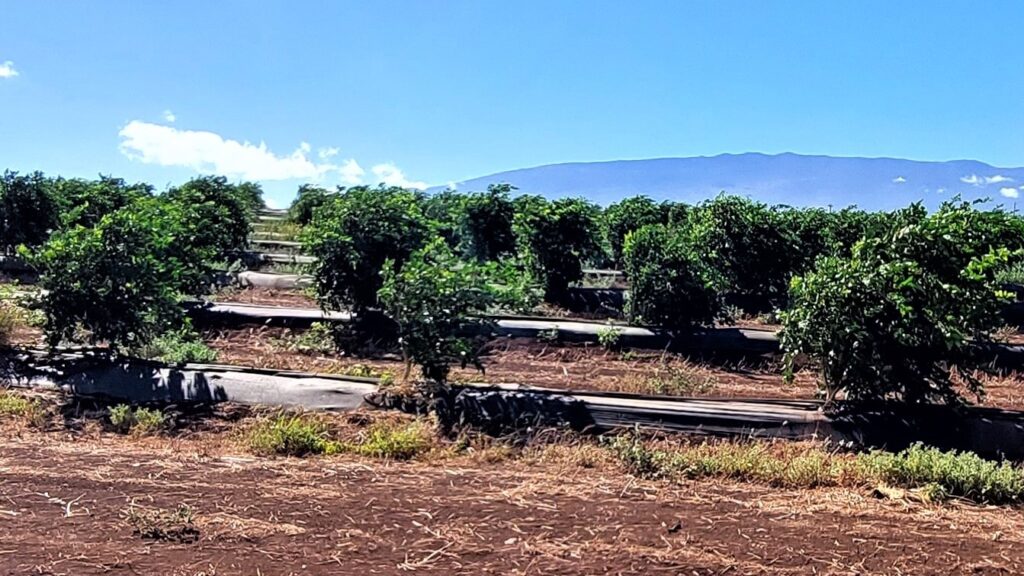
This business model is very similar to other companies I represent through Alternative Ag Investors. When a country or state imports the vast majority of their food, growing and selling produce is a winner. Your market is obvious, transportation costs are minimized and oftentimes there is strong government support for expanding agribusiness operations.
Sold under the Maui Harvest brand the company has already planted a significant variety of crops based on the 10 most imported commodities to Hawaii. In addition to the limes, lemons and oranges that I saw, they are already growing vast expanses of macadamia nuts, coffee, onions and papaya.
Alternative Ag Investors offers opportunities to own your own Specialty Coffee, Orange Groves and Lime Groves. Click the links for more details.
Given that I sell managed farmland for a living, the fact that I wanted to make a tour to inspect some of these fields came as no surprise to my patient bride. Since one of my clients grows limes, I decided to take a closer look at one of their fields.

There is nothing particularly surprising about these fields. The trees were planted roughly 10 to 12 feet apart atop a berm covered with a weed mat. The weed mat is important for conserving water; it reduces soil evaporation and keeps away water-sucking weeds. Then there was a 1-inch light plastic irrigation line that ran down the center of each berm with individual drip irrigation lines running off of it to each tree.
The trees are all in nice very neat rows and seemed to be well attended. The one thing that was quite noticeable is that the trade winds bend all of the trees in one direction, which is kind of funny. As I drove past other fields that were still being prepped for planting, I saw what I would estimate to be 12-inch water lines being laid.
Water is always critical to a farming operation. The best land in the world is absolutely useless without adequate water. In this case, the irrigation canals and pipes originally used for growing sugar cane have been partially taken over by the farm company.
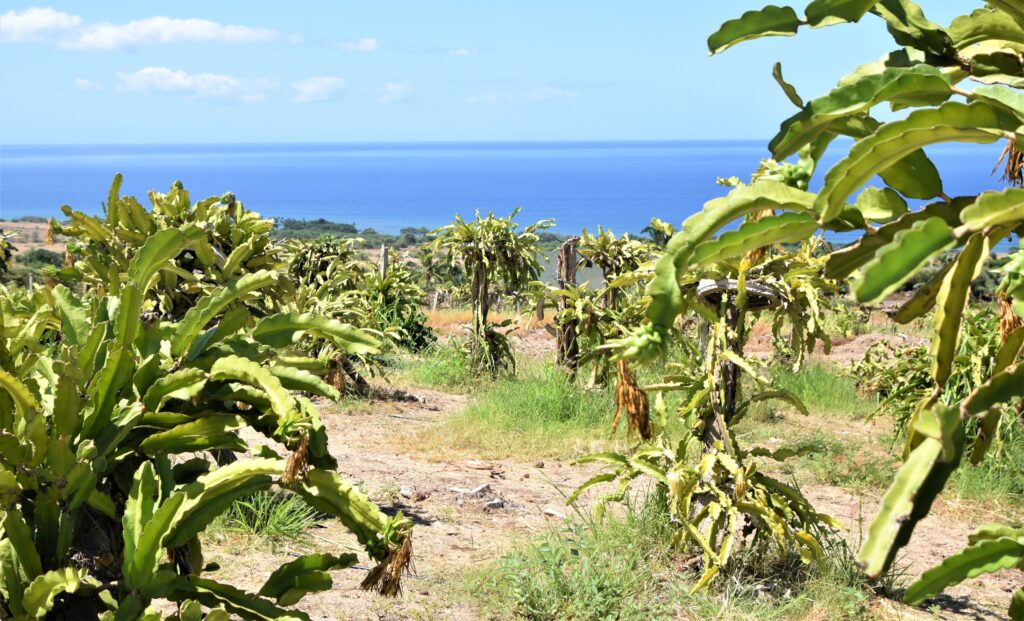
Maui Dragon Fruit Farm
While I enjoyed seeing all the new farm activity on Maui, the agricultural highlight of my trip was the Maui Dragon Fruit Farm. A new Dragon Fruit Greenhouse Project has just started in Panama, so I was curious to see how this Hawaiian project was going.
The 27-acre farm is USDA-certified organic and located in West Maui, about a five-minute drive from Lahaina. The farm specializes in growing dragon fruit and other exotic fruit such as bananas, cacao, pineapple, papaya, sapote and coconuts. All farming is done by hand.
Native to South and Central America, dragon fruit is the fruit of a cactus. Most farms use one of two methods for growing the cactus; either stanchions with a “head” that the cactus grows through or on an arbor. Both methods are used on the Maui farm.
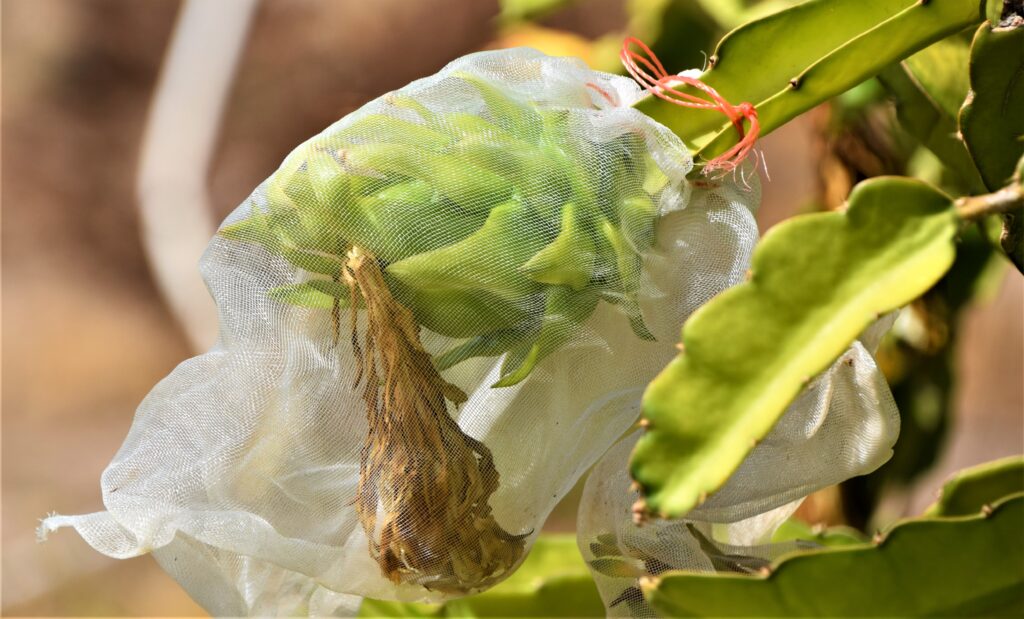
When the cactus flowers, it blooms only once and at night. In many places bats and moths serve as pollinators, but in West Maui it is necessary to hand pollinate using a small paint brush to spread the pollen across the stigma of the flower. This means that pollination takes place between 9:00 PM and 11:00 PM each night.
As the fruit develops, it is covered with a cloth bag that protects it from insects. The farm used to have 16 varieties of dragon fruit on 4 plots of land. Unfortunately, a devastating fire wiped out 3 of the plots 2 years ago and only 12 varieties are now grown. Those damaged plots have now been replanted and a 5th is planned.
The fruit is harvested May through November and, prior to the fire, they grew 800 pounds per plot per year. The dragon fruit requires irrigation because this part of Maui only gets 22 inches of rain per year. Interestingly, a nearby mountain is the 9th rainiest spot on earth!
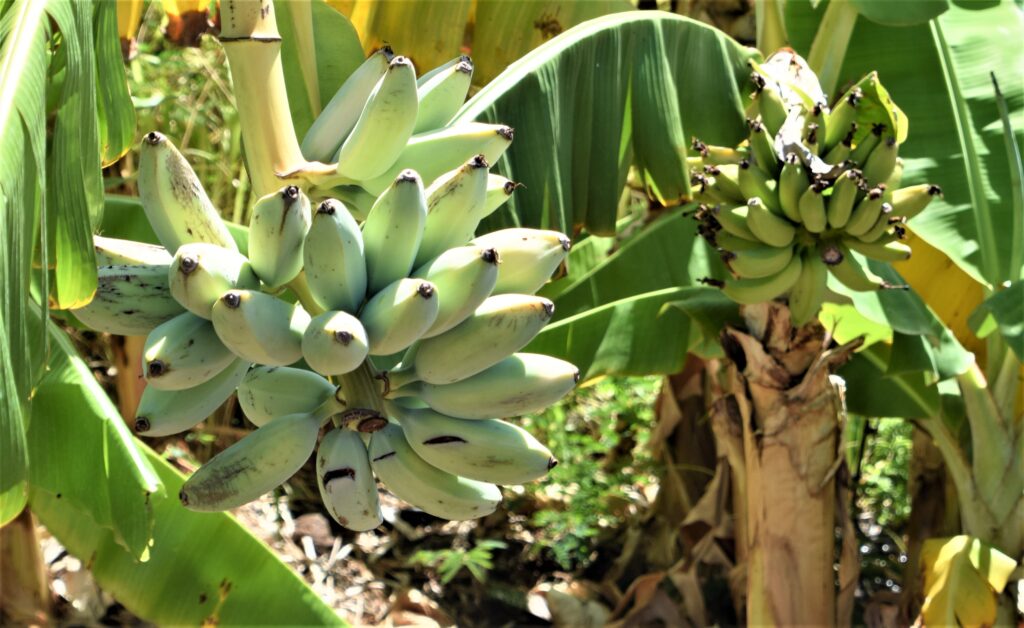
Unlike most produce that is either cut or plucked off the plant, harvesting dragon fruit requires cutting a notch into the plant because other methods cause it to dry out quickly, reducing its shelf-life. If harvested when fully ripe, dragon fruit only has a shelf-life of about a week. That’s why most large commercial farms harvest prior to the fruit being fully mature and it ripens in transit.
I also learned some interesting things about some of their other crops. They grow 2 types of bananas; the Apple or Manzano Banana and the Blue Java Banana (sometimes called the ice cream banana because of its creamy fruit). The Apple Banana is found in most local stores and is a fatter variety than the standard Cavendish that most of us are used to.
Many years ago, I toured a large pineapple farm in Australia and found it fascinating. What I didn’t remember is that it takes 2 years to grow a pineapple. Since each plant produces a single fruit, that’s a big commitment and requires a lot of land in order to have regular harvests.
Lizzie, our tour guide, was amazing. Her knowledge of not only the Maui Dragonfruit operations but also the crops, in general, was quite remarkable. If you ever get to Maui, I highly recommend the Maui Dragonfruit tour.
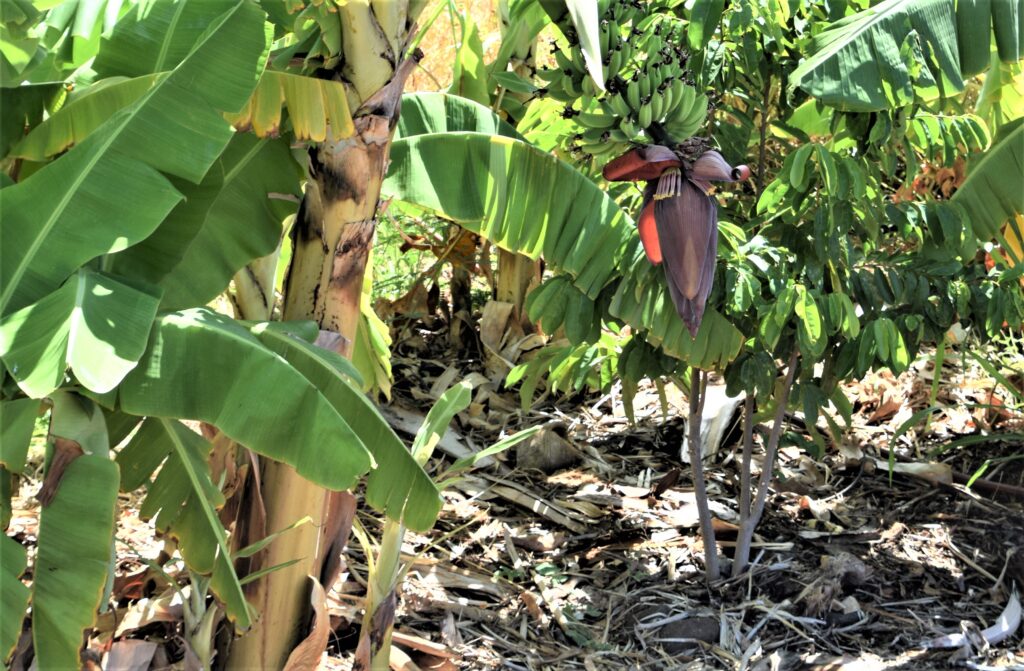

As an avid traveler, Brian has explored and enjoyed cultural encounters in over 40 countries while spending many years refining The Points Game — using credit card sign-up bonuses and other tricks to get nearly free travel. Getting the most out of every trip is an art and Brian launched My Travel Traxx to help others enjoy the art of travel.




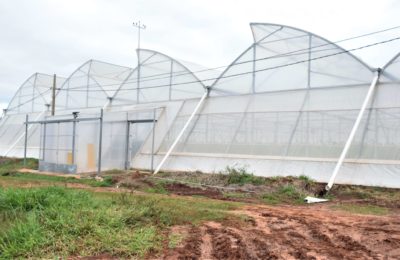
Thanks for sharing!